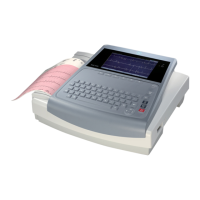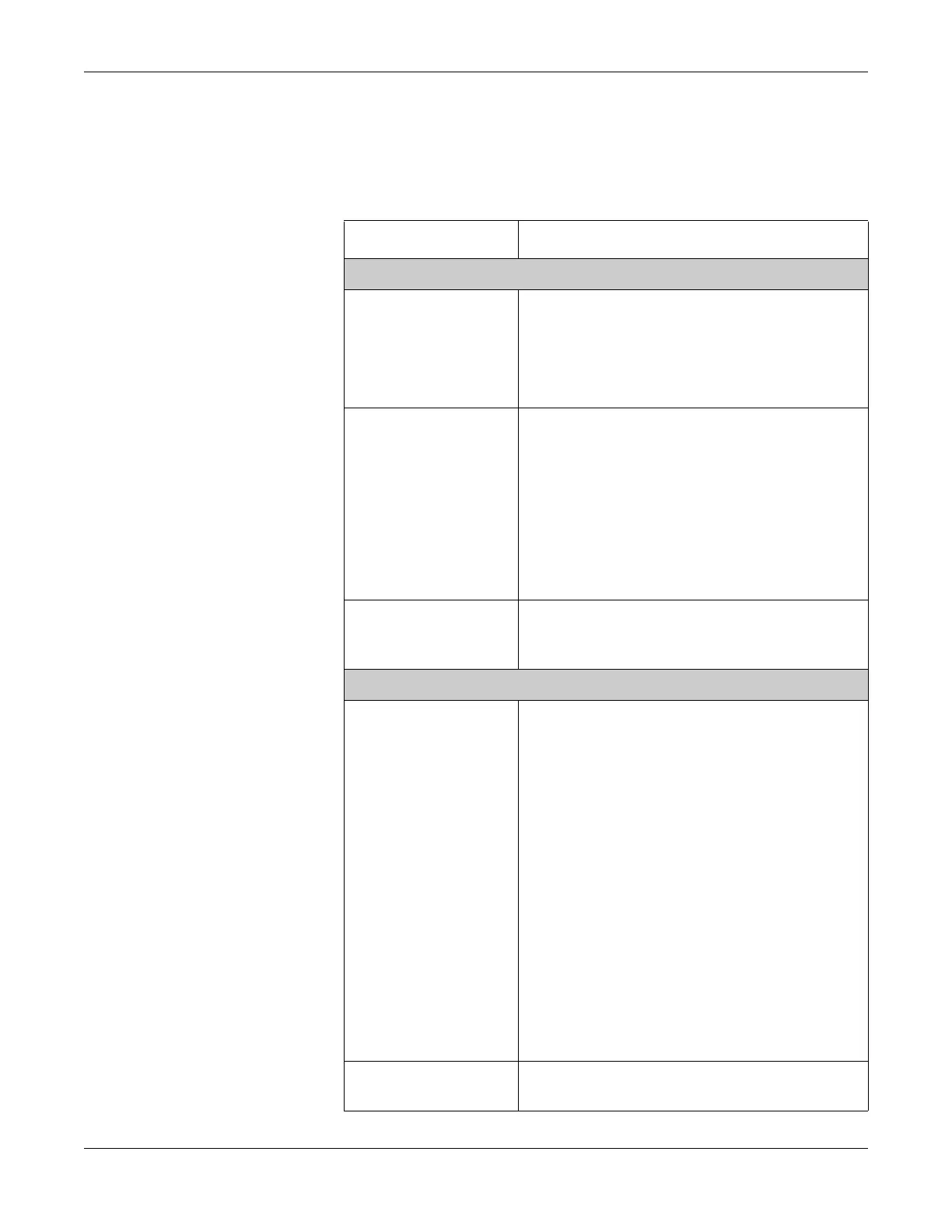9-14 MAC™ 1600 2028451-182B
System Configuration
Many of the fields on the Stress ECG Setup windows are the same as
those on the Resting ECG Setup or the Arrhythmia Setup. The following
table lists the settings that are unique or differ from the resting or
arrhythmia setups. For all other fields, refer to “Resting ECG Setup” on
page 9-6 or “Arrhythmia Setup” on page 9-12.
Field Comment
Page 1
Low Pass Filter [Hz] Identical to the field in the Resting ECG Setup.
If FRF is the selected ECG Filter Type, the low pass filter
will be available during a stress test only when the FRF
filter is toggled off. For more information, refer to “Stress
Options” on page 7-6.
ECG Filter Type Determines which method will be used to filter the ECG
signal. Options are:
ADS
Anti-Drift System – reduces baseline shift
FRF
Finite Residual Filter – reduces noise and artifacts
The selection also determines the behavior of the Lower
Pass Filter [Hz] and ADS/FRF fields.
ADS/FRF Enables/disables the selected ECG Filter Type. The label
for this field changes depending on the filter type that was
selected.
Page 2
Max Predicted HR Formula Determines the formula used to predict the patient’s
maximum heart rate. Options are:
WHO
This formula, recommended by the World Health
Organization, subtracts the patient’s age from 220.
For example, a 50 year old’s maximum predicted
heart rate would be 220 - 50 = 170.
AHA
This formula, recommended by the American Heart
Association, varies depending on the age of the
patient.
< 25 years old = 160 bpm
> 75 years old = 115 bpm
25—75 years old = 160 – (age – 25) * 0.9
For example, a 50 year old’s maximum predicted
heart rate would be 160 - (50-25) * 0.9 = 138.
Target HR [%] Determines the percentage of the maximum predicted
heart rate the stress test is targeting.

